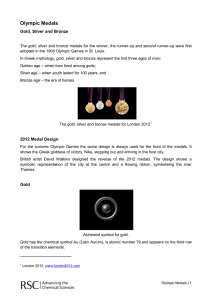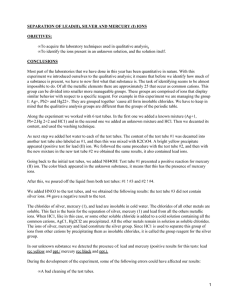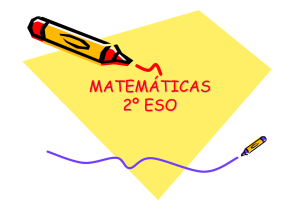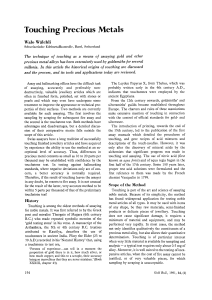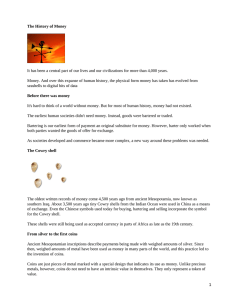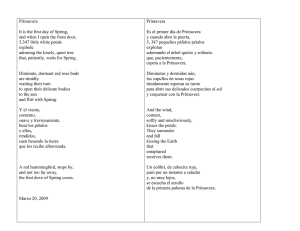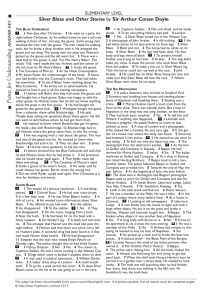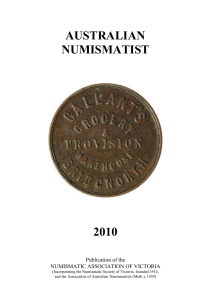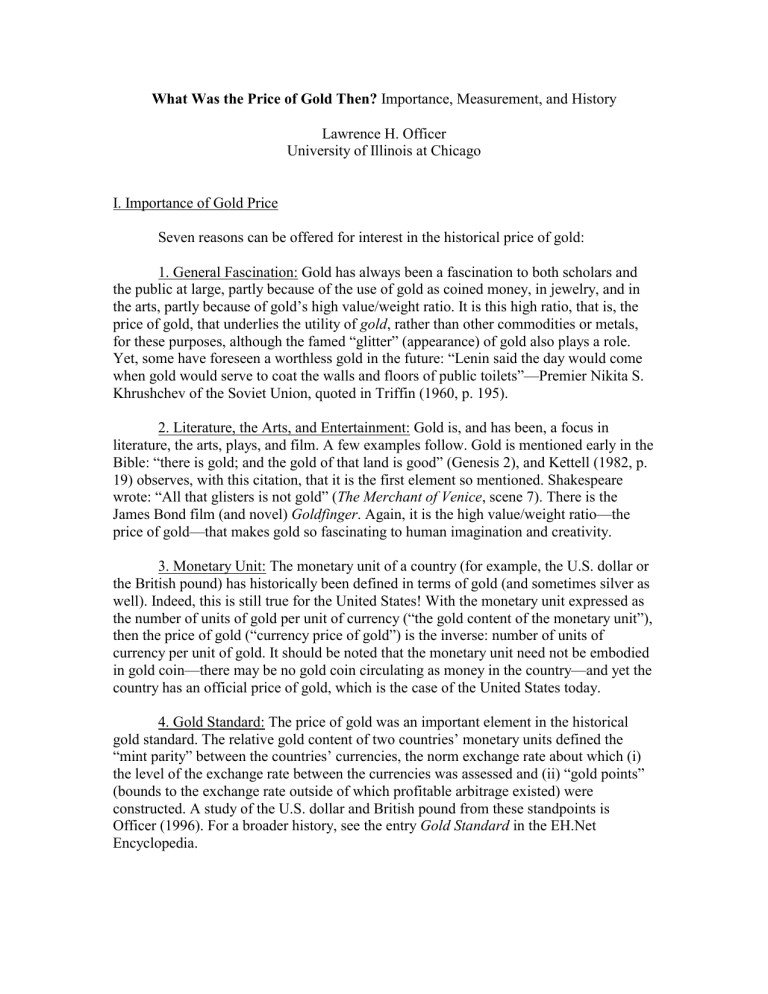
What Was the Price of Gold Then? Importance, Measurement, and History Lawrence H. Officer University of Illinois at Chicago I. Importance of Gold Price Seven reasons can be offered for interest in the historical price of gold: 1. General Fascination: Gold has always been a fascination to both scholars and the public at large, partly because of the use of gold as coined money, in jewelry, and in the arts, partly because of gold’s high value/weight ratio. It is this high ratio, that is, the price of gold, that underlies the utility of gold, rather than other commodities or metals, for these purposes, although the famed “glitter” (appearance) of gold also plays a role. Yet, some have foreseen a worthless gold in the future: “Lenin said the day would come when gold would serve to coat the walls and floors of public toilets”—Premier Nikita S. Khrushchev of the Soviet Union, quoted in Triffin (1960, p. 195). 2. Literature, the Arts, and Entertainment: Gold is, and has been, a focus in literature, the arts, plays, and film. A few examples follow. Gold is mentioned early in the Bible: “there is gold; and the gold of that land is good” (Genesis 2), and Kettell (1982, p. 19) observes, with this citation, that it is the first element so mentioned. Shakespeare wrote: “All that glisters is not gold” (The Merchant of Venice, scene 7). There is the James Bond film (and novel) Goldfinger. Again, it is the high value/weight ratio—the price of gold—that makes gold so fascinating to human imagination and creativity. 3. Monetary Unit: The monetary unit of a country (for example, the U.S. dollar or the British pound) has historically been defined in terms of gold (and sometimes silver as well). Indeed, this is still true for the United States! With the monetary unit expressed as the number of units of gold per unit of currency (“the gold content of the monetary unit”), then the price of gold (“currency price of gold”) is the inverse: number of units of currency per unit of gold. It should be noted that the monetary unit need not be embodied in gold coin—there may be no gold coin circulating as money in the country—and yet the country has an official price of gold, which is the case of the United States today. 4. Gold Standard: The price of gold was an important element in the historical gold standard. The relative gold content of two countries’ monetary units defined the “mint parity” between the countries’ currencies, the norm exchange rate about which (i) the level of the exchange rate between the currencies was assessed and (ii) “gold points” (bounds to the exchange rate outside of which profitable arbitrage existed) were constructed. A study of the U.S. dollar and British pound from these standpoints is Officer (1996). For a broader history, see the entry Gold Standard in the EH.Net Encyclopedia. 5. Availability over Time: The gold price is a price that can be defined, catalogued, and measured precisely, going back centuries in time. Further, there exist several gold-price series with these properties. The appropriate gold-price series can be compared with prices, or price indices, of ordinary commodities. An example is the work of Jastram (1977). 6. Present Relevance: The price of gold is still relevant today, with gold traded in various markets around the world, including London and New York. The motivation is speculation on the price of gold, or investment in gold as an asset the long-term price of which might be forecasted as upward. Further, in some developing countries, gold is a basic store of value, hoarded by people who distrust government paper money (currency), bank money (deposits), and paper assets (bonds). Of course, the price of gold is also pertinent to industrial, medicinal, and artistic users. 7. Relationship to Silver: Gold is not the only precious metal historically used as money; the other such metal is silver. Consider the ratio of the currency price of gold to the currency price of silver (“the gold/silver price ratio”). The resulting number is a “real” rather than money price; it is the silver price of gold: the number of units of silver per unit of gold. This special price is of interest for two reasons. First, it is intriguing to observe this price as reflecting the relative valuation of the two precious metals that served as “commodity money” for centuries. Second, a divergence between the gold/silver price ratio at a country’s mint and at the “world” marketplace provides incentive for (i) the undervalued metal at the mint to be sold on the world market, and (ii) the overvalued metal to be coined and used as domestic money. Either an effective gold standard or silver standard can result, notwithstanding the fact that the country might have legal bimetallism (both gold and silver coined at the mint, and both metallic coin “legal tender” or “lawful money”). Historical examples abound, including U.S. and British monetary experience. For details, Officer (1996) and Redish (2000) may be consulted, as well as the entry Bimetallism in the EH.Net Encyclopedia. II. Measurement of Gold The measurement of gold has two dimensions, weight and fineness. 1. Weight: The customary measure of weight domestically in the United States is the “avoirdupois pound” and its sub-units, among which are ounces and grains. (This statement is not true for most of the rest of the world and for international trade, in which the metric system reigns.) Under the avoirdupois schemata, 16 “avoirdupois ounces” = 1 avoirdupois pound and 437.5 grains = 1 avoirdupois ounce, yielding 7000 grains = 1 avoirdupois pound. However, gold (and other precious metals, as well as gems) are measured in “Troy pounds” and its sub-units, ounces, pennyweights, and grains. In the Troy system, 12 “Troy ounces” = 1 Troy pound, 20 pennyweights = 1 ounce, and 24 grains = 1 pennyweight, whence 480 grains = 1 Troy ounce and 5760 grains = 1 Troy pound. Although the avoirdupois and Troy pounds differ, as do the avoirdupois and Troy ounces, the “grain” used in the two systems is the same measure. So the Troy pound is almost 18 percent lighter than the avoirdupois pound. Specifically, 1 Troy pound = 5760/7000 = 144/175 = 0.822857 avoirdupois pound. In contrast, the Troy ounce is almost 10 percent heavier than the avoirdupois ounce: 1 Troy ounce = 480/437.5 = 117/175 = 1.097143 avoirdupois ounces. The gold (and silver) underlying the series presented in What Was the Price of Gold Then? are measured in Troy ounces. 2. Fineness: The fineness of gold (also applicable to other precious metal, or gems) is the proportion of the gold that is pure (“fine”) as distinct from alloy (generally copper for coin, with the copper considered valueless in this use). The fineness of precious metals and gems was traditionally expressed in carats, with 24 carats denoting pure gold and, for alloyed gold, 1 carat = 4 grains, though in times past the same carat was sometimes divided into 12 grains. There are many ways to express fineness. For example, pure gold is described as 24-carat gold, 1000 fine, or a fineness of 1, or unitary fineness. Gold of 23 carats 3½ grains (four-grain carat) consists of 233½/4 parts gold to ½ part alloy, and is equivalent to gold of 23 carats 10½ grains (12-grain carat), gold .9948 [computed as (233½/4)/24] fine, or gold of 9948 or 9948/1000 fineness. The “standard fineness” of gold (or silver) is the official, legal, stipulated fineness, and the price of gold (or silver) may be expressed either “per standard ounce” or “per fine ounce.” Price per standard ounce may be converted to price per fine ounce by multiplication by the inverse of the standard fineness (expressed as a proportion). For example, if the standard fineness is 900, then price per fine ounce is 10/9th the price per standard ounce. III. Forms of Gold There are three basic forms of gold: (i) bullion (strict sense), meaning gold in mass, that is not priced, (ii) coin, that historically circulated as money, and (iii) gold bars, that decidedly does not circulate as money but was (and is) a convenient form for international transfer of gold and for speculating or investing in gold. The term “bullion” (loose sense) is also used to designate all non-coin gold, including bars, that is, (i) and (iii) together. Gold coin and bars historically are priced both officially and in the marketplace. IV. Official and Market Price of Gold 1. Official Price: The series of the British and U.S. official price of gold in What Was the Price of Gold Then? are expressed as British pounds (£) or U.S. dollars ($), respectively, per fine ounce. The official price is the inverse of the gold content of either (i) gold coin of stipulated currency valuation, or (ii) the monetary unit defined as gold of a specified weight and fineness. It should be emphasized again that the monetary unit can be so defined even absent domestic gold coin—the norm in today’s world. Under the gold-coin standard, in which the monetary authority (mint) coined gold brought to it by private parties, there was a difference between the “official price” (the stipulated value of gold coin per standard ounce) and the, lower, “mint price” (the price per standard ounce received by the depositor of gold). The difference was “mint charges” (sometimes called “gross seigniorage”), consisting of mint expenses (such as for melting and assaying) and profit (also called “net seigniorage” or simply “seigniorage”). It is the official price, not the mint price, that is tabulated in the official-price series in What Was the Price of Gold Then? The official price is also called the “rating of fine gold per ounce troy” (Feavearyear, 1963, p. 436) and the “mint equivalent” by Redish (2000, pp. 27-28). 2. Market Price: The market price of gold in both London and New York is presented in What Was the Price of Gold Then? While the market price is logically the price determined in the marketplace, the official price has a strong influence on the market price under a gold standard (for example, Britain 1822-1913, United States 18791932). The reason is that under this regime, private parties have the option of transacting with the monetary authority rather than in the market. With the country’s central bank also transacting in gold, the divergence of the market from the official price can become even narrower. Gold was coined in Britain without mint charges during 1822-1913 (in fact, since 1666), except for “small fees” for the assayer and porter (Craig, 1953, p. 239). Further, whether the fineness of bullion was above or below standard, no charge was made and payment was to be altered proportionately. The Mint Act of April 4, 1870 provided that the mint could refuse bullion that required refining to achieve standard fineness. It also specified a charge for melting into bars, if the bullion was not already in ingot form. These regulations were reasonable and did not alter the fact that, for standard bullion, the mint price and the official price were equal. The same is true for the U.S. Mint since 1879, as the Act of January 14, 1875 (“Resumption Act”) eliminated the seigniorage charge on standard bullion and on January 1, 1879 the United States returned to the gold standard (having been off that standard since December 30, 1861). The Act of 1873 specified charges for processing nonstandard bullion, to be fixed from to time at actual average cost. Again, this regulation was consistent with an equal mint and official price (for standard bullion). In spite of the equality of the mint and official price, private parties preferred to sell their gold to the Bank of England, even though its buying price was typically below the mint price. The reason is that this avoided a long waiting period at the Mint. In contrast, in the United States from 1879 to 1967, the official price (equal to the mint price until the United States left the gold standard in 1933) was exactly the private price. There was no gold market of price-determining consequence in New York during these years. V. Currency Units 1. United States: The official and market prices of gold are expressed as number of currency units per fine ounce. For the U.S. official price (1786- ) and New York market price (1791- ), the currency unit is taken to be the dollar (divided into 100 cents) throughout. This practice is followed even for 1786-1792, in spite of the fact that until the Mint Act of April 2, 1792, the dollar of 100 cents was not the unit of account of the country. It is true that the in the Act of July 6, 1785, Congress resolved that the “money unit” of the United States should be the dollar with a decimal system of coinage, and that the Act of August 8, 1786, specified the dollar divided into 100 cents as the “money unit” and “money of account” of the country. However, neither Act was put into effect. In fact, until 1794 coinage only of minor copper coins occurred at the Mint and the dominant coin in the United States was the Spanish dollar, not decimalized but rather divided into eight reals (whence the term “pieces of eight” for the dollar). The United States has not been on a full (domestic) gold standard since 1933 and has not been on a partial gold standard (internationally) since the 1970s. Yet even today the U.S. official price of gold continues to exist and to have, albeit limited, significance: it is the price (dollars per fine ounce) at which the U.S. official physical gold stock (millions of fine ounces) is valued in currency (billions of dollars). 2. Britain: In contrast, Britain was on the “pound, shilling, pence” (£, s, d) system at least since the 13th century (Feavearyear, 1963, p. 8, n. 1). With £1 = 20s and 1s = 12d, £1 = 240d. This unit-of-account schemata lasted until February 15, 1971, when the pound was decimalized: £1 = 100d, that is, the pound was divided into 100 new pence. The British official price (1257-1945) is expressed in £ (with decimal part) per fine ounce. (Of course, the shilling and pence components of the price are divided by 20 and 240, respectively, to obtain the decimal part of the £-price.) The British official price continued until 1946. It is true that on September 20, 1931, Britain left the gold standard. However, the official price of gold remained at the value established in 1717. The series ends in 1945, because on December 18, 1946, the United Kingdom established a “par value” for the pound in terms of the dollar, in accordance with its obligations under the International Monetary Fund. With this action, the official price of gold ceased to have meaning; for the price was no longer directly determined. True, according to the rules of the Fund, the dollar to which the pound was pegged was “of the weight and fineness in effect on July 1, 1944” (that is, the dollar worth 1/35th of a fine ounce, via the U.S. official price of $35 per fine ounce). However, any British “official price of gold” could be computed only indirectly via the par value of the pound with the dollar. Such an indirectly determined price would be without legal foundation, and so is not considered here. The currency unit for the London market price (1718- ) is more complicated, in three respects. First, it was customary to record and publish the price in the £, s, d schemata. So this currency system is provided as an alternative to the price expressed in £ with decimal part. Second, until 1918 the price was expressed per standard (11/12th fine) ounce, and from 1919 per fine ounce. This dichotomy is preserved in the £, s, d series—but not in the £-price series, which, for consistency, is on a fine-ounce basis throughout. Third, from 1950 the London market price was generally expressed in dollars rather than British currency, and this usage is respected here. 3. Gold/Silver Price Ratio: The gold/silver price ratio naturally is expressed as the number of ounces of silver per ounce of gold, computed as the ratio of the price of gold to the price of silver. While this ratio can be official (when a country is on a legal bimetallic standard), the “world” market ratio is presented in What Was the Price of Gold Then? The marketplace selected is the best representation of the “world” price, and the location varies over time: Hamburg 1687-1832, London 1833-1914, New York 1915- . Logically, both silver and gold should be measured in fine ounces (else different standard fineness for each metal distorts the ratio); but this proper expression is known to be the case only for the New York data. VI. Format of Series 1. Observation: The three market-price series (London market price, New York market price, and gold/silver price ratio) are annual averages, for best representation of an annual series. The British and U.S. official-price series are on an end-of-year basis, because it distorts understanding when an official price is averaged for a year during which price changes. 2. Precision: Market prices in dollars are tabulated with two decimal places (“dollars and cents”), as this is the format of the source data. Two decimal places are also used for the gold/silver price ratio, for the same reason. Sources for the London market British-currency price of gold are either (i) exact daily quotations, or (ii) annual averages of exact (daily) quotations with two decimal places in the pence component (£, s, d schemata), or (iii) daily quotations with three decimal places in the decimal component (£ with decimal part). It is reasonable, then, to format the £-price with three decimal places and the £, s, d price with two decimal places. Official prices are presented with six decimal places. This precision is not misleading, because these prices are known exactly. They are rational numbers, that is, expressible as a whole number with a fractional component. The fractional part is converted to decimal form in the table. VII. Further Reading Bimetallism. Entry in EH.Net Encyclopedia. de Vries, Margaret G., and J. Keith Horsefield (1969). The International Monetary Fund, 1945-1965, vol. 2. Washington, DC: International Monetary Fund. Feavearyear, Albert (1963). The Pound Sterling: A History of English Money. Oxford: Clarendon Press. Gold Standard. Entry in EH.Net Encyclopedia. Jastram, Roy W. (1977). The Golden Constant: The English and American Experience, 1560-1976. New York: John Wiley & Sons. Kettell, Brian. Gold (1982). Cambridge, MA: Ballinger Publishing Company. Officer, Lawrence H. What Was the Price of Gold Then? A Data Study. ________ (1996). Between the Dollar-Sterling Gold Points: Exchange Rates, Parity, and Market Behavior. Cambridge: Cambridge University Press. Redish, Angela (2000). Bimetallism: An Economic and Historical Analysis. Cambridge: Cambridge University Press. Triffin, Robert (1960). Gold and the Dollar Crisis. New Haven: Yale University Press.


